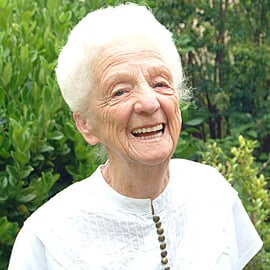New South Wales far and away outnumbers other states when it comes to village communities, with approximately 550 providing independent retirement living to over 40,000 residents.
There are over 550 Village Communities in New South Wales alone. New South Wales far and away outnumbers other states when it comes to village communities, with approximately 550 providing independent retirement living to over 40,000 residents.
Villages can be found all over the state from Tweed Heads on the Far North Coast to Albury Wodonga near the Victorian Border.
Coast or Country
Not surprisingly, village communities in New South Wales are largely concentrated along its coast, with the North Coast, Hunter, South Coast and Sydney's North Shore / Beaches most popular. Communities can also be found in larger inland towns like Wagga Wagga, Bathurst, Young and Dubbo - over 50s taking advantage of the demand for new residents and skills in country regions, plus their lower living costs.
How Village Communities Evolved
Public housing for the elderly has existed since the mid-1800s, thanks to the efforts of church and charity organisations. Assistance was mainly provided to the poor, especially widows.
The concept of retirement villages began to evolve around the time of World War II - Brisbane's Reverend Harold Wheller approaching the owner of Marchant's Soft Drink to fulfil his dream of building "comfortable little cottages and gardens for older married couples." Mr. Marchant provided £22,000 and personally helped select Australia's first site - now known as Wheller Gardens at Chermside - operated by Wesley Mission.
In 1954, Prime Minister Menzies - impressed by a development he inspected in Adelaide - introduced the Aged Person's Homes Act (APHA) that granted churches and charities subsidised funding to build and manage self care or independent units. Yet, in 1974 the Whitlam Government decided to phase out the subsidy, leaving the groups to stand on their own.
They were therefore forced to start charging real money to cover their operating and capital re-investment costs - and the ‘resident funded' era of villages began. To attract paying residents, villages had to be of a better standard than ‘charity' accommodation; hence the concept of villages as ‘small boxes' changed. This led to a greater acceptance by the public and, in turn, the attraction of private developers to the sector.
Three Types of Village Community
Today there are essentially three types of village communities in New South Wales - affordable, middle market and resort-style village communities.
Affordable
These tend to be local, small-scale developments operated by not-for-profit council or church groups, though some are operated by the Village Life organisation. They appeal to the local needy or those eligible for rent assistance. Residents pay a weekly service fee of less than $50 or in some cases, nothing at all. Facilities and living space are likely to be basic but at the very least they provide 24-hour emergency call, a social coordinator and a community building.
Middle Market Village Communities
Middle market communities are usually operated by large charities and church groups, along with some private operators. Weekly service fees of between $50 and $75 are the norm. These communities offer more facilities than affordable villages - including swimming pools, activities rooms, medical rooms, and a village bus.
Resort-Style Village Communities
These are purpose built, styled communities. Quality of design, construction and lifestyle experience are emphasised, often with a resort theme (i.e. golf, beach, bush, lake or garden setting). On top of providing modern village facilities, they can offer tennis courts, bowling and putting greens, spas, gyms, restaurants and hairdressers Resort-style villages can be $50 - $100 million private sector developments, with weekly service fees at around $100 or more.
Ageing Baby Boomers and Future Demand
Though the first baby-boomers will turn 60 this year, words such as ‘old' and ‘immobile' are not yet in their cultural dictionary. For their age group, boomers are fitter and healthier on average than any previous generation and feel unready to give up their independence. The village communities industry, however, is seeing interest from those just ahead of the boomers - the 65ers - to get in early to a village. They are selling their family homes so as to release cash to live on while they can still travel; relocating to a new region while they can still build social and medical relationships and, through doing so, securing a lifetrack for themselves for the next 20 years.
Developers are helping by creating active village communities, with quality golf courses, relaxed rural settings, lake front marinas and beachside resorts. All at prices that are unimaginable in a capital city.
Whether they like it or not, boomers are growing old - and living longer. So much so that the population of over 55s is due to increase by 3.5 million over the next 25 years, almost doubling that of today. At the current take-up rate, 30,500 new village homes will have to be constructed by 2021 to satisfy today's demand alone. That is 2,000 new village homes or an average 20 villages costing $1 billion every year. The overriding message is, if you are thinking of a village community lifetrack, do not be a reactor, putting it off until an emergency occurs. You may be disappointed with no happy options.






